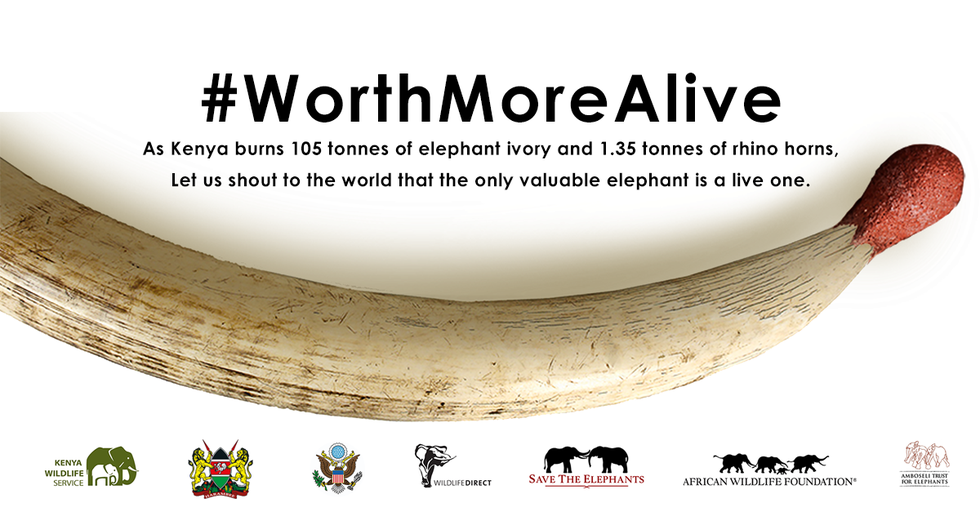On Saturday, April 30, President Uhuru Muigai Kenyatta set fire to over 105 tons of elephant and rhinoceros ivory in Kenya's Nairobi National Park. Since 1989, Kenya's Wildlife Service has been helping to organize burns to combat poaching and illegal ivory trade. The video below outlines the fourth burn the country has hosted.
If you didn't already know, ivory is a rather hot commodity. The website, Save The Elephants, explains that between 2010 and 2012 alone, over 100,000 elephants were killed for their ivory tusks. Its translucent appearance is beautiful and its composition is easy to sculpt. The obsession with ivory, which is centuries old, has created an increase in organized crime within Africa. It has also formed and a vast system of exports that filters ivory into Asia. Wildlife trade expert, Esmond Bradley Martin, best outlines the allure of poaching. In an article from CNN, he claims that tusks from "about 8,000 elephants would be worth more than $105 million on the black market. The rhino horn, from 343 animals, would be worth more than $67 million." Money aside, illegal ivory trade has also created a gateway for terrorism in Africa.
Because of this, many Kenyans and foreigners stand behind President Kenyatta's initiative to decrease poaching. The revolutionary event is the largest "bonfire" of illegal animal products that Africa has ever seen — over $100 million worth of tusks lit up the sky to remind people that the future of elephants lies with poachers. Kenyatta made this very clear, stating:
"No one, and I repeat, no one, has any business in trading in ivory, for this trade means death — the death of our elephants and the death of our natural heritage. In 10 years in central Africa, we have lost as many as 70% of the elephants. The elephant, as has been said, is an iconic symbol of our country. Unless we take action now we risk losing this magnificent animal."
Though this seems honorable, many critics oppose this cause claiming that "destroying" ivory is not the way to "save the elephants." Conservationists view this as a catalyst for increased poaching and illegal trade. Richard Leakey, a prominent advocate for wildlife rights, deemed the burn "ignorant" because "[Kenya] did it before and prices went from $300 down to $5 within three months of that fire."
The general director of the Kenya Wildlife Service, Kitili Mbathi, silenced the angry conservationists by saying,"we don't believe there is any intrinsic value in ivory, and therefore, we're going to burn all our stockpiles and demonstrate to the world that ivory is only valuable on elephants." It is true, this burn will not stop all poachers. But it makes a clear statement that Africa, and the world, stand together in the fight against illegal trade and poaching.
The online initiative, tagged on Twitter as #WorthMoreAlive, is yet another reminder of the importance of this event. Personally, I have never been more proud to be a native Kenyan.
Tusks provide protection, allow for survival through drought, and serve as natural plows to cultivate the African agricultural environment. But elephants are so much more than their tusks; they are intelligent, compassionate, and a source of tourism, which stimulates the African economy. More importantly, elephants are beautiful and important creatures; we all must fight with Kenya to save elephants from extinction.























